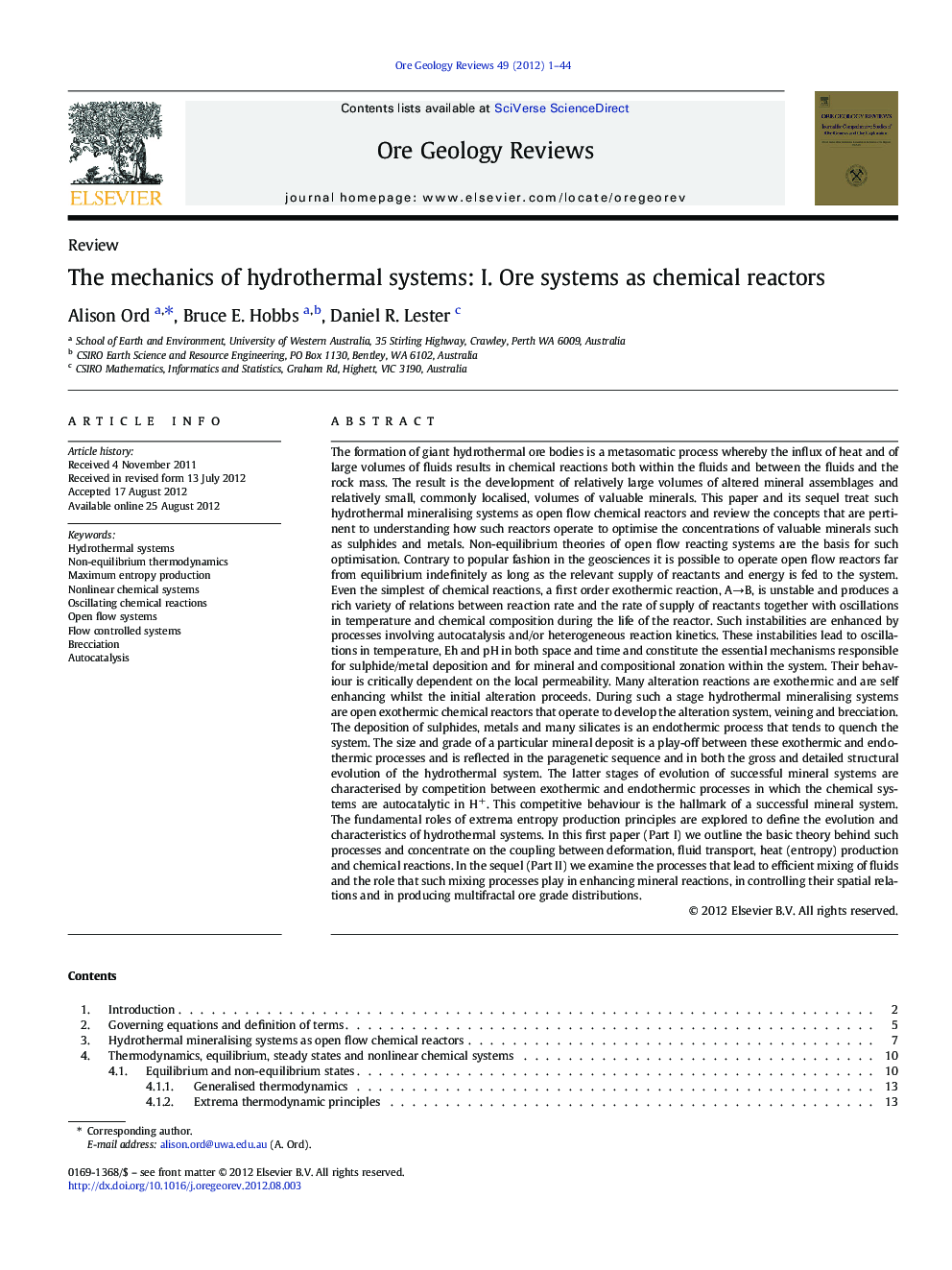| کد مقاله | کد نشریه | سال انتشار | مقاله انگلیسی | نسخه تمام متن |
|---|---|---|---|---|
| 4697606 | 1637254 | 2012 | 44 صفحه PDF | دانلود رایگان |

The formation of giant hydrothermal ore bodies is a metasomatic process whereby the influx of heat and of large volumes of fluids results in chemical reactions both within the fluids and between the fluids and the rock mass. The result is the development of relatively large volumes of altered mineral assemblages and relatively small, commonly localised, volumes of valuable minerals. This paper and its sequel treat such hydrothermal mineralising systems as open flow chemical reactors and review the concepts that are pertinent to understanding how such reactors operate to optimise the concentrations of valuable minerals such as sulphides and metals. Non-equilibrium theories of open flow reacting systems are the basis for such optimisation. Contrary to popular fashion in the geosciences it is possible to operate open flow reactors far from equilibrium indefinitely as long as the relevant supply of reactants and energy is fed to the system. Even the simplest of chemical reactions, a first order exothermic reaction, A→BA→B, is unstable and produces a rich variety of relations between reaction rate and the rate of supply of reactants together with oscillations in temperature and chemical composition during the life of the reactor. Such instabilities are enhanced by processes involving autocatalysis and/or heterogeneous reaction kinetics. These instabilities lead to oscillations in temperature, Eh and pH in both space and time and constitute the essential mechanisms responsible for sulphide/metal deposition and for mineral and compositional zonation within the system. Their behaviour is critically dependent on the local permeability. Many alteration reactions are exothermic and are self enhancing whilst the initial alteration proceeds. During such a stage hydrothermal mineralising systems are open exothermic chemical reactors that operate to develop the alteration system, veining and brecciation. The deposition of sulphides, metals and many silicates is an endothermic process that tends to quench the system. The size and grade of a particular mineral deposit is a play-off between these exothermic and endothermic processes and is reflected in the paragenetic sequence and in both the gross and detailed structural evolution of the hydrothermal system. The latter stages of evolution of successful mineral systems are characterised by competition between exothermic and endothermic processes in which the chemical systems are autocatalytic in H+. This competitive behaviour is the hallmark of a successful mineral system. The fundamental roles of extrema entropy production principles are explored to define the evolution and characteristics of hydrothermal systems. In this first paper (Part I) we outline the basic theory behind such processes and concentrate on the coupling between deformation, fluid transport, heat (entropy) production and chemical reactions. In the sequel (Part II) we examine the processes that lead to efficient mixing of fluids and the role that such mixing processes play in enhancing mineral reactions, in controlling their spatial relations and in producing multifractal ore grade distributions.
Journal: Ore Geology Reviews - Volume 49, December 2012, Pages 1–44